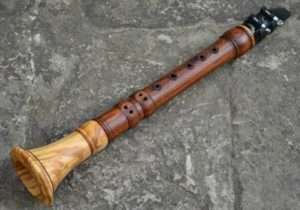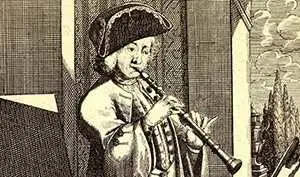
History of the clarinet
Clarinet is a musical wind instrument made of wood. It has a soft tone and a wide sound range. The clarinet is used to create music of any genre. Clarinetists can perform not only solo, but also in a musical orchestra.
Its history spans over 4 centuries. The tool was created in the 17th – 18th century. The exact date of appearance of the tool is unknown. But many experts agree that the clarinet was created in 1710 by Johann Christoph Denner. He was a woodwind instrument craftsman.  While modernizing the French Chalumeau, Denner created a completely new musical instrument with a wide range. When it first appeared, the chalumeau was a success and was widely used as part of instruments for the orchestra. Chalumeau Denner created in the form of a tube with 7 holes. The range of the first clarinet was only one octave. And to improve the quality, Denner decided to replace some elements. He used a reed cane and removed the squeaker pipe. Further, in order to obtain a wide range, the clarinet underwent many external changes. The main difference between a clarinet and a chalumeau is the valve on the back of the instrument. The valve is thumb operated. With the help of a valve, the range of the clarinet shifts to the second octave. By the end of the 17th century, the chalumeau and clarinet were being used simultaneously. But by the end of the 18th century, chalumeau was losing its popularity.
While modernizing the French Chalumeau, Denner created a completely new musical instrument with a wide range. When it first appeared, the chalumeau was a success and was widely used as part of instruments for the orchestra. Chalumeau Denner created in the form of a tube with 7 holes. The range of the first clarinet was only one octave. And to improve the quality, Denner decided to replace some elements. He used a reed cane and removed the squeaker pipe. Further, in order to obtain a wide range, the clarinet underwent many external changes. The main difference between a clarinet and a chalumeau is the valve on the back of the instrument. The valve is thumb operated. With the help of a valve, the range of the clarinet shifts to the second octave. By the end of the 17th century, the chalumeau and clarinet were being used simultaneously. But by the end of the 18th century, chalumeau was losing its popularity.
After Denner’s death, his son Jacob inherited his business. He did not leave his father’s business and continued to create and improve musical wind instruments.  At the moment, there are 3 great instruments in the museums of the world. His instruments have 2 valves. Clarinets with 2 valves were used until the 19th century. In 1760 the famous Austrian musician Paur added another valve to the existing ones. The fourth valve, on its behalf, turned on the Brussels clarinetist Rottenberg. In 1785, Briton John Hale decided to include a fifth valve in the instrument. The sixth valve was added by the French clarinetist Jean-Xavier Lefebvre. Due to which a new version of the instrument with 6 valves was created.
At the moment, there are 3 great instruments in the museums of the world. His instruments have 2 valves. Clarinets with 2 valves were used until the 19th century. In 1760 the famous Austrian musician Paur added another valve to the existing ones. The fourth valve, on its behalf, turned on the Brussels clarinetist Rottenberg. In 1785, Briton John Hale decided to include a fifth valve in the instrument. The sixth valve was added by the French clarinetist Jean-Xavier Lefebvre. Due to which a new version of the instrument with 6 valves was created.
At the end of the 18th century, the clarinet was included in the list of classical music instruments. Its sound depends on the skill of the performer. Ivan Muller is considered a virtuoso performer. He changed the structure of the mouthpiece. This change affected the sound of the timbre and range. And completely fixed the place of the clarinet in the music industry.
The history of the emergence of the tool does not end there. In the 19th century, Conservatory professor Hyacinth Klose, together with the musical inventor Louis-Auguste Buffet, improved the instrument by installing ring valves. Such a clarinet was called the “French clarinet” or “Boehm clarinet”.
Further changes and ideas were made by Adolphe Sax and Eugène Albert.
The German inventor Johann Georg and clarinetist Karl Berman also contributed their ideas.  They changed the operation of the valve system. Thanks to this, the German model of the instrument appeared. The German model is very different from the French version in that it expresses the power of the sound at a higher range. Since 1950, the popularity of the German model has declined sharply. Therefore, only the Austrians, Germans and Dutch use this clarinet. And the popularity of the French model has increased dramatically.
They changed the operation of the valve system. Thanks to this, the German model of the instrument appeared. The German model is very different from the French version in that it expresses the power of the sound at a higher range. Since 1950, the popularity of the German model has declined sharply. Therefore, only the Austrians, Germans and Dutch use this clarinet. And the popularity of the French model has increased dramatically.
At the beginning of the 20th century, in addition to the German and French models, “Albert’s clarinets” and “Mark’s instrument” began to be produced. Such models had a wide range, which raises the sound to the highest octaves.
At the moment, the modern version of the clarinet has a complex mechanism and about 20 valves.





